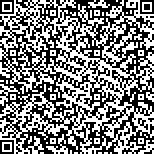|
|
| |
|
|
| 本文已被:浏览 1679次 下载 1567次 |

码上扫一扫! |
|
|
| 辽宁大连裙带菜虫害生物调查及其系统发育分析 |
|
李晓东1,2,3,4,5, 曾宥维1,3,4,5, 冷晓飞6, 张明付6, 李新正1,3,4,5, 逄少军1,2,3,4
|
|
1.中国科学院海洋研究所 山东 青岛 266071;2.中国科学院实验海洋生物学重点实验室
山东 青岛 266071;3.中国科学院海洋大科学研究中心 山东 青岛 266071;4.青岛海洋科学与技术试点国家实验室海洋生物学与生物技术功能实验室 山东 青岛 266071;5.中国科学院大学 北京 100049;6.大连海宝渔业有限公司 辽宁 大连 116045
|
|
| 摘要: |
| 2019年10月下旬,辽宁省大连市裙带菜(Undaria pinnatifida)遭受大面积虫害,受灾面积不少于15.36 hm2。本研究通过现场调查和形态学鉴定,确定了虫害为丹氏麦杆虫(Caprella danilevskii Czerniavski, 1868)为代表的麦杆虫属(Caprella spp.)动物暴发生长导致。麦杆虫常见污损于养殖海藻和海水养殖设备上,近年来对我国福建地区的羊栖菜(Sargassum fusiforme)养殖业、山东地区的龙须菜(Gracilaria lemaneaformis)养殖业造成了巨大损失,而我国渤海养殖海区此前未见遭受麦杆虫虫害的严重影响的报道。本研究讨论了气候变暖和漂浮铜藻(Sargassum horneri)在此次虫害暴发中起到的作用,并首次描述了我国同一海区采集到的不同麦杆虫属物种的形态学特征。生产上建议将碳酸氢铵(NH4HCO3,俗称“碳铵”)制作为传统“挂袋肥”的方式悬挂在养殖筏架上,能够驱散、杀死麦杆虫并提供藻类生长所需的氮元素。采用贝叶斯法基于线粒体DNA细胞色素氧化酶亚基Ⅰ(COⅠ)基因片段构建了麦杆虫属物种的系统发育树。序列分析显示,该COⅠ基因片段长度为479 bp,AT含量为63%,转换/颠换偏倚率R值为1.130,序列未发生缺失或插入现象;种间遗传距离平均值为0.231(0.210~0.279),种内遗传距离平均值为0.014(0~0.030)。本研究表明,线粒体COⅠ基因序列具有适宜的变异信息,种内保守、种间存在差异,适用于麦杆虫属的物种识别,并为开发麦杆虫属DNA条形码技术奠定了基础。 |
| 关键词: 裙带菜 麦杆虫 污损生物 害虫 线粒体COⅠ基因 |
| DOI:10.19663/j.issn2095-9869.20200113002 |
| 分类号: |
| 基金项目: |
|
| Phylogenetic analysis of algal pests of the economic alga Undaria pinnatifida in the farming region of Dalian |
|
LI Xiaodong1,2,3,4,5, ZENG Youwei1,3,4,5, LENG Xiaofei6, ZHANG Mingfu6, LI Xinzheng1,3,4,5, PANG Shaojun1,2,3,4
|
|
1.Institute of Oceanology, Chinese Academy of Sciences, Qingdao, Shandong 266071, China;2.CAS Key Laboratory of Experimental Marine Biology, Institute of Oceanology, Chinese Academy of Sciences, Qingdao, Shandong 266071, China;3.Center for Ocean Mega-Science, Chinese Academy of Sciences, Qingdao, Shandong 266071, China;4.Laboratory for Marine Biology and Biotechnology, Pilot National Laboratory for Marine Science and Technology (Qingdao), Qingdao, Shandong 266071, China;5.University of Chinese Academy of Sciences, Beijing 100049, China;6.Dalian Haibao Fishery Co., Ltd., Dalian, Liaoning 116045, China
|
| Abstract: |
| Dalian is the principal farming region for the economic alga Undaria pinnatifida, producing 65% of the national annual biomass. In late October 2019, insect pests caused serious damage to seedlings of U. pinnatifida in this region. We performed field investigation excursions and analyzed pest samples through the sequencing of the mitochondrial COⅠ gene. The results showed that explosive growth of Caprella danilevskii was the major cause. Caprella spp. are considered common biofouling organisms that usually inhabit the surface of maricultural algae and maricultural facilities, such as cultural rope and oyster nets. Steadily increasing seawater temperatures and the drifting brown alga Sargassum horneri biomass also played a role in the explosion of the pests. To the best of our knowledge, this is the first description of the morphological characteristics of different Caprella spp. collected in the same area in China. Caprella spp. are commonly found on the surface of cultured seaweed and marine aquaculture facilities, which has caused enormous losses to the Sargassum fusiforme farming industry in Fujian Province and Gracilaria lemaneaformis farming industry in Shandong Province for the past few years. We conclude with a proposal for dispersing or killing Caprella species through a traditional ammonium bicarbonate fertilizer application method. Sequence analysis revealed that these COⅠ gene fragments were 479 bp in length and showed an obvious AT-skewness. The transition/transversion bias (1.130) was much higher than the critical value (0.4), which could offer effective phylogenetic information. There was no insertion or deletion that occurred in each fragment. The average inter-species genetic distance was 0.231 (0.210~0.279) and the average intra-species genetic distance was 0.014 (0~0.030). The phylogenetic relationships among Caprella species were represented. The results proved that the cloned COⅠ gene contains rich information on gene variations. This gene is conserved in intra-species and is different among species. It is a suitable DNA barcode for identifying species in the genus Caprella. |
| Key words: Undaria pinnatifida Caprella spp. Fouling organism Pest Mitochondrial COⅠ gene |
|
|
|
|